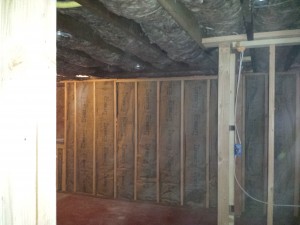 Insulation is the process of slowing down the spread of sound, heat, or electricity. Heat gain and heat loss can be both barred thanks to insulation. The insulation technology plays a significant role in the functionality of most electrical appliances including freezers, heaters, and refrigerators.
Insulation is the process of slowing down the spread of sound, heat, or electricity. Heat gain and heat loss can be both barred thanks to insulation. The insulation technology plays a significant role in the functionality of most electrical appliances including freezers, heaters, and refrigerators.
House insulation is one of the chief use of insulation. Several advantageous come with an insulated house. Apart from an insulated house being favorably energy efficient, the house is gloriously comfortable because the temperature remains fairly the same even in unforgiving weather conditions and changes. Therefore, the house remains cooler during summer and even warmer during winter seasons. Additionally, insulation makes sure that the house has less maintenance because it provides an excellent thermal resistance. Thanks to insulation, one can ensure that the house temperature is not dependent on the outdoor temperature.
With the rough financial times, house insulation can be advantageous because it can assist in saving energy; hence, reducing utility bills. Via ensuring that the house temperature remains uniform, the cost of using heaters to control the temperature in the house is given a wide berth.
There are various types of home insulation. Before choosing a home insulation, it is imperative to note that the different types of home insulation have their merits and demerits. Understanding these pros and cons will help in making an informed decision. Primarily, the material used for the insulation will determine the properties of a given home insulation type. Some of the popular insulation options include foam, plastic, fiberglass, reflective, rigid board, loose fill, blow in, and batts and blankets insulation.
Foam Insulation
Foam insulation is a type of insulation that is fitted by pouring liquid foam between the heated and non-heated space in the house. Compared to batt and blankets insulation, foam insulation is more expensive. In order to get better results, it is advisable to use foam insulation when constructing a new house, as compared to using it to an already constructed structure. Additionally, due to the airtight property of foam insulation, this option is not recommended for attic insulation.
Spray Foam Insulation
Generally, spray foam insulation is the most preferred option for insulating the walls and ceilings. This helps in keeping the house suitably warm during the cold weather and cooler during the hot weather. Compared to fiberglass insulation, spray foam insulation is more expensive. When looking for an insulation option that will help in reducing utility and repair bills, spray foam insulation would be an excellent choice. Spray insulation also helps in making sure that a house is bugs free. It is also worth mentioning that spray foam insulation is the most durable insulation option.
Ductwork Insulation
This type of insulation is used when insulating water heaters, air conditioners, hot and cold water supply pipes and ducts. Ductwork insulation is cheaper and helps in saving energy costs.
Attic Insulation
Attic insulation comes with substantial benefits. Adding insulation to a house attic helps in maintaining the desired temperature throughout the house. Thanks to attic insulation, the house becomes comfortable thanks to the controlled room temperature. For houses that have warm surrounding, an R38 insulation would be appropriate. On the other hand, R49 insulation would be apt for a house in a cold surrounding.
